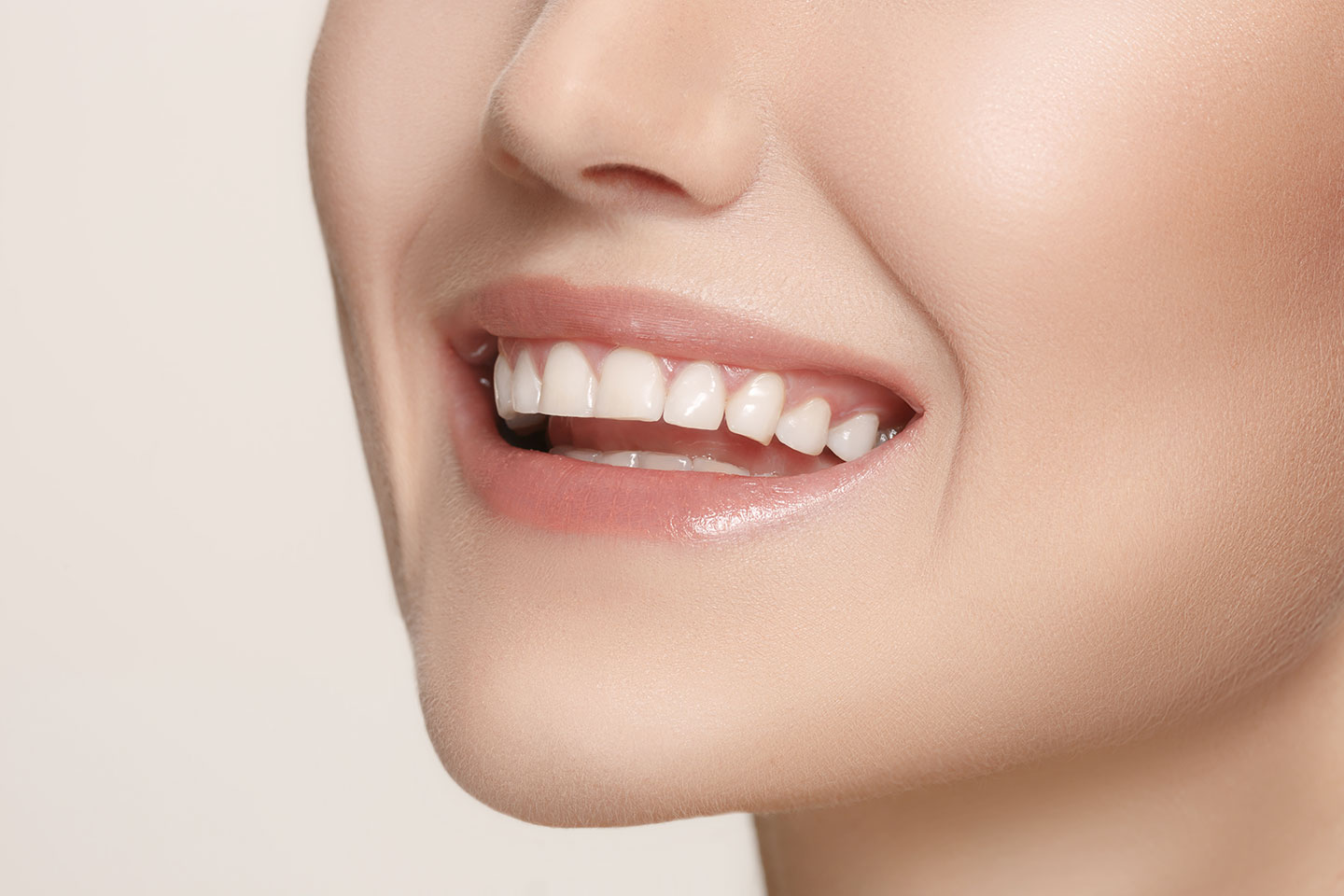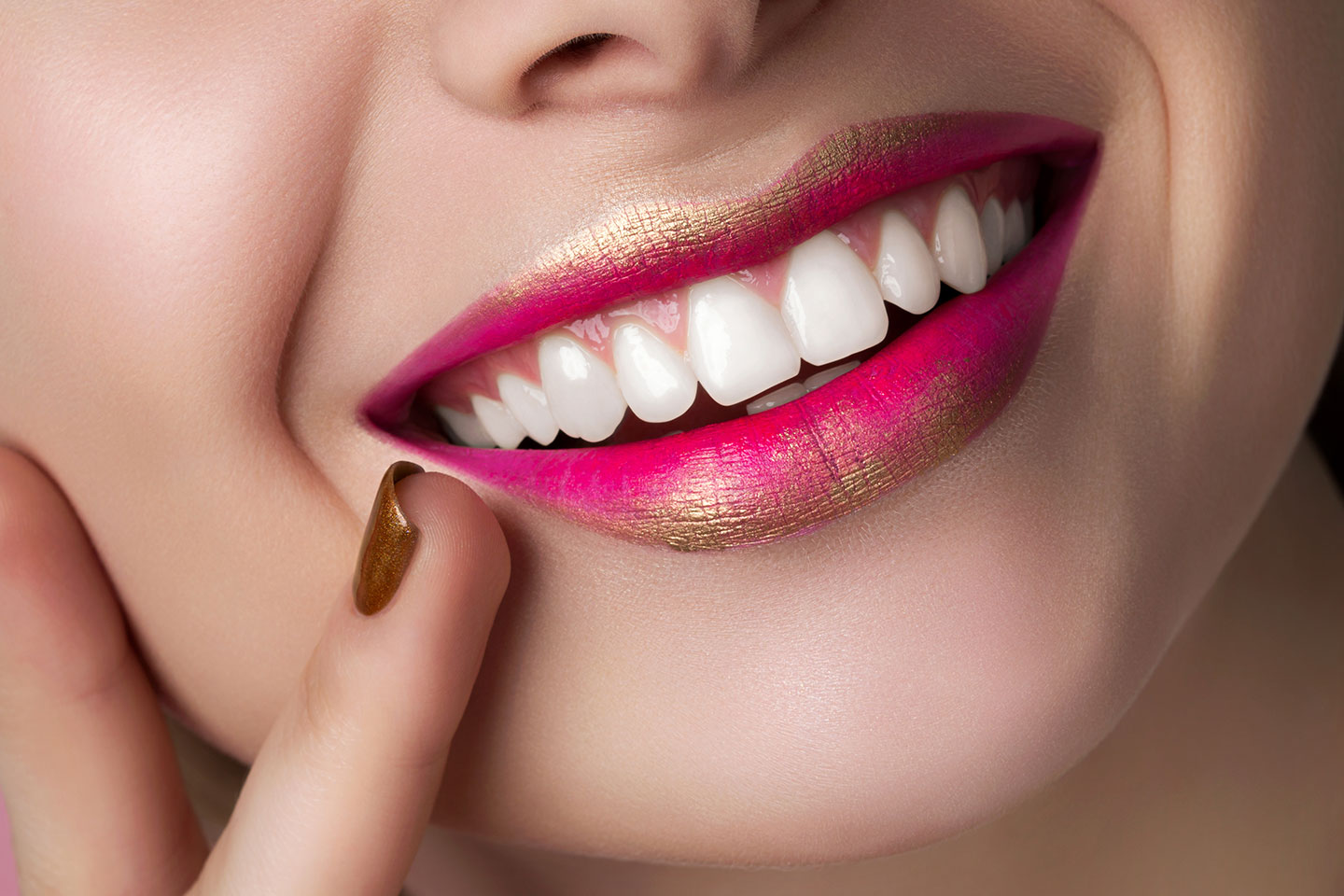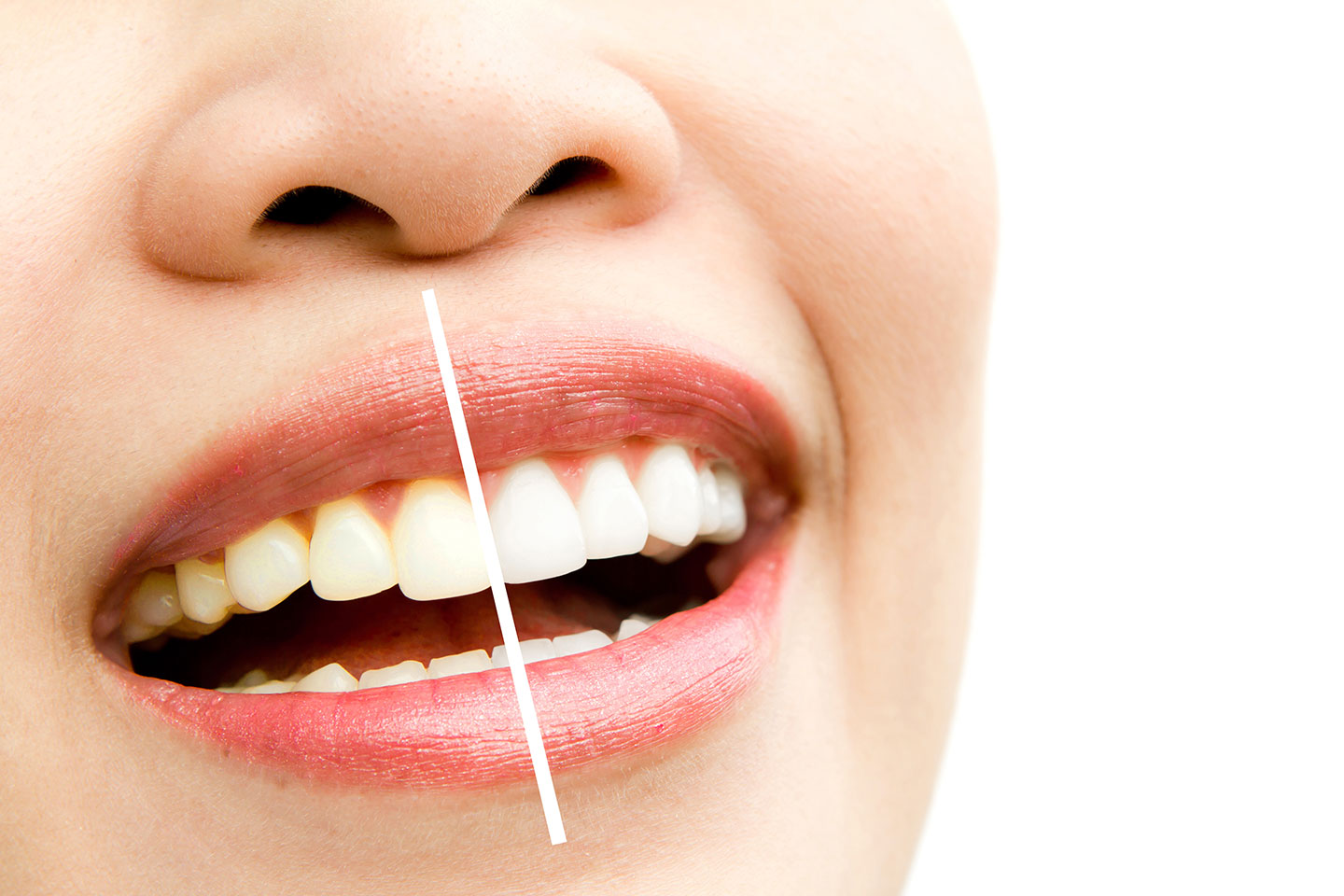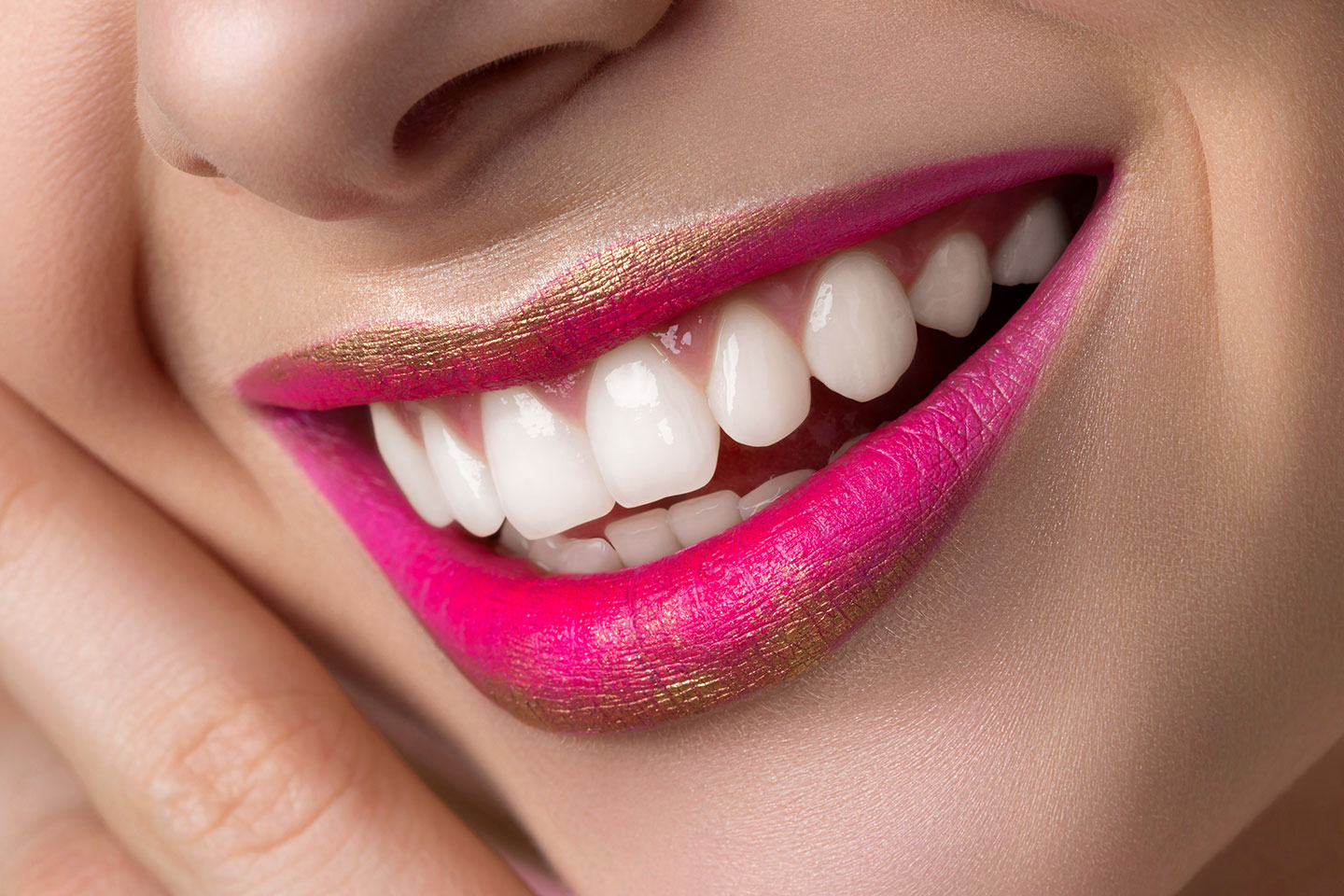Teeth whitening
Teeth whitening is the treatment of dark teeth, whether vital or avital (when the nerve has been taken out). Teeth whitening can be performed in several ways. At our Clinic, teeth whitening is performed in an outpatient setting, under the supervision of a dentist. It takes about an hour and the technique used is Beyond Polus. The teeth are prepared (cleaned of soft deposits and tartar), and then they are treated with the whitening product, 30% hydrogen peroxide for 15 minutes, and then rinsed. The result of the whitening is observed and, if needed, the procedure may be repeated two more times.
Whitening can also be performed at home, with splints made on the basis of an impression of the patient’s tooth, and they are used as carriers of the whitening gel. After brief training at the Clinic, patients can easily whiten their teeth on their own, wearing the splint overnight or during the day. The results occur gradually, not as fast as teeth whitening at the Clinic.
During the teeth whitening process, intensely coloured drinks, food and cigarettes should not be consumed. The process is not permanent and should be repeated after a certain period.
Avital (dead) teeth change colour over time; they become darker due to the change in tooth metabolism. They can be whitened, too. The procedure is as follows: preparation of the tooth to be whitened, and the whitening gel is inserted. This gel remains in the tooth for about two weeks, until the corresponding colour is achieved. After that, a final filling is placed.
Teeth whitening does not damage the dental structure and the transient sensitivity of the tooth to cold may occur as an adverse reaction. This reaction is not permanent, and in order to mitigate it, special pastes reducing teeth sensitivity can be used.
Tooth jewelry
Dental jewellery is a simple way to make your smile irresistible and unique. The procedure is completely painless, non-invasive and does not cause the dental tissue damage. A tooth is prepared (cleaned of soft deposits) and the jewellery is fixed to the anterior surface of the upper teeth. The jewellery can be taken off or replaced anytime, without consequences.
Fillings made of aesthetic materials
Contemporary dentistry uses numerous materials for dental fillings. Contemporary aesthetic materials (“white fillings”) have been perfected so much that they have almost completely replaced the use of amalgam (“Gray fillings”).
Their advantage is that a smaller amount of the dental substance is removed from the tooth, compared to what is required for the amalgam fillings. At our Clinic, we use the most contemporary aesthetic materials for dental fillings and they fully meet the mechanical and aesthetic criteria.
These materials are used for the reconstruction (“repair”) of a tooth affected by caries, while the shape and form of a tooth altered due non-caries factors can also be repaired, improved and established (wedge-shaped erosions in the zone of the neck of the tooth, broken cutting edges, teeth with congenital structural defects).
The disadvantage of these materials is that the filling edge may become stained over time, and the colour of the whole filling may change because of pigments from food and drinks, so they need to be replaced after a certain period.
Ceramic facets or veneers
Veneers are aesthetic dental restorations in the form of thin ceramic flakes that are permanently cemented on the anterior teeth surfaces, in order to change the shape, position, size and colour of teeth.
Teeth trimming for facets is less invasive than trimming for crowns, as instead of the whole tooth, only the front part and the cutting edge are trimmed. Trimming is minimal in this case, mostly 0.3 to 0.7 mm. There are also so-called non-prep ceramic facets, set on intact, i.e. untrimmed teeth, but they require certain conditions, i.e. position of teeth.
The aesthetic issues that can be resolved with ceramic facets are:
- mildly irregular tooth position
- mild discolorations, i.e. changes in tooth colour
- differences in sizes of the surrounding teeth
- dissatisfaction with the tooth shape and size
- diastema, i.e. a gap between the teeth
The ceramic facets can only be placed on healthy teeth, meaning that teeth with large fillings, large caries lesions, teeth affected by periodontal disease and patients with inflamed gums that are swollen and bleeding are not candidates for ceramic facets. Bad habits, like nail-biting or biting other items, bruxism, reversed bite, edge-on-edge bite or an extremely strong bite also exclude the use of ceramic facets. As facets are very thin flakes, their thickness being a few tenths of a millimetre, these bad habits or irregular bites would easily lead to facet cracking.
It is very important to comply with the dentist’s instructions after ceramic facet placement, in the interest of longer duration. It is necessary to maintain flawless mouth and teeth hygiene, to avoid coloured drinks and food to avoid staining the facet edges, and to avoid biting off hard food or items using the teeth with facets.
If all the required conditions are met, ceramic facets may be an ideal solution for your perfect smile!

















